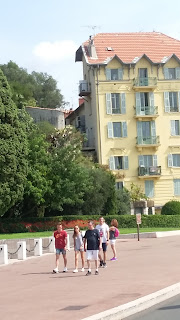The York Regional Forest is open to the public 365 days per year with no cost to enter. The York Regional Forest is made up of 2,300 hectares of protected land, located in different parts of the Region. Eighteen properties with more than 120 kilometres of trail are available to the public.
Dainty Tract is one of the trails available to the public. 15182 Mccowan Rd, Whitchurch-Stouffville, Ontario.
In the nineteenth century the Whitchurch landscape was subjected to heavy timbering to clear the land for cultivation.
As a result
“The open fields had become blowsand deserts, drifting sands had blocked roads, the split rail fences were soon buried, and on dry windy days
the whitchurch sky was yellow from blowing sand.”
“Drinking water began to dry up and the number of birds, deer, fish, and other animals dwindled.”
“With the top soil gone, there was not enough available nutrient in the soil to support even grass.”
In hilly areas, the light soils were readily removed by water flow, the ground being gouged into ever deepening gullies. Sand-filled flash flood waters became common for every one downstream in the spring, while the same patch became a parched, waterless bake oven in the summer sun...
Whitchurch had become a wasteland...
Large volumes of Ontario’s softwood forest was shipped to Britain and the United States as square timber. Hardwoods were typically burned in piles to make potash. With the forest cleared, farming could commence.
Most farming activity was supported only for a few decades, the land had given out by the 1890s.Large areas of wasteland were created in the light sandy soils of Whitchurch Township and elsewhere in southern Ontario. The mistake: to farm the Oak Ridges Moraine.
Realizing the problem, many municipalities like Whitchurch paid landowners 25 cents a tree to start reforesting roadsides and gullies. In 1910 the York County council passed a resolution to consider the problem, but not much was done until 1920.
By 1924 an agreement was struck between the County of York and the Province of Ontario where the County would purchase land, and Provincial foresters would plant and manage the forest.
York County purchased the first property for reforestation in 1922 from Ted Hollidge. It was 197 acres and cost a little more than $4,000.
Trees were planted in 1924. Part of the deal was that Ted himself be the first caretaker for the emerging Vivian Forest.
An additional 400 acres were purchased in 1924. By 1930, 710 acres of land had been reforested;by 1938, an additional 1,166 acres.
A little more than 60 years after the first purchase, the public forests across York Region (York County became York Region in 1971) totaled 4,900 acres.
The reasons for developing the forest were multi- faceted: the demonstration of wise land use, wood production, a decrease in run-off and erosion, an increase in stream flows during the summer months, and a reduction in stream siltation.
Now the sad story: The forests were managed through prescribed cuttings. Generally speaking, a third of the volume of the plantation is removed in the first thinning, and 10 years later it is again thinned. By the time of the final harvest, there are theoretically less than 200 trees per acre out of the original 800 or 1200 planted.
There is no respect for trees. They are just objects to be used.
Prior to 1947, cutting resulted in only enough wood for internal needs and to supply a few local markets. For instance, in 1948 only 300 cords, or 25,000 cubic feet of wood were harvested from thinnings. These early sales proved unsatisfactory to the costs incurred. From 1949 onward, sales were in the form of pulpwood to the Ontario Paper Company. Second thinnings produced larger material by 1957, in which sales were focused toward product for pole barn construction. A profit was finally being realized, 33 years after the first tree was planted.
So the health of the environment is not so important only the profit is. So what is this Ontario paper company doing Flyer probably that are thrown in the garbage the moment they are received.
The former York County forests were managed by the Ontario Department of Lands and Forests (now Ministry of Natural Resources) until 1998, when The Regional Municipality of York assumed full management responsibility for the forest.
Today (2017), the York Regional Forest system is comprised of 22 tracts totaling over 5,700 acres, in four of the nine towns and cities in York Region. Whitchurch- Stouffville, with 11 public forest tracts including new acquisitions, claims 52% of the forest system, or roughly 3,000 acres.
About 10 years ago the red pine in some areas started to die out, generally called Red Pine Decline associated with two pathogens; both are a form of root rot and not easily controlled. The moss covered remains of red pine stumps and trunks are readily seen in areas of the forest. In recent years, the Region’s ash trees are under threat of being wiped out entirely as a result of the Emerald Ash Borer. All untreated ash trees are expected to die as a result of this infestation.
These disease are the direct result of the logging trees. They did not learn yet to protect themselves against disease. They need more mature trees to learn from how to protect themselves against the cold and the disease.
So let-s be clear the management of the forest is cutting the trees in the forest for profit of those that cut the trees that they did not even plant it. That is why the trees are all very young.
Those that do not learn from the past tend to repeat it.
.






























































































































































